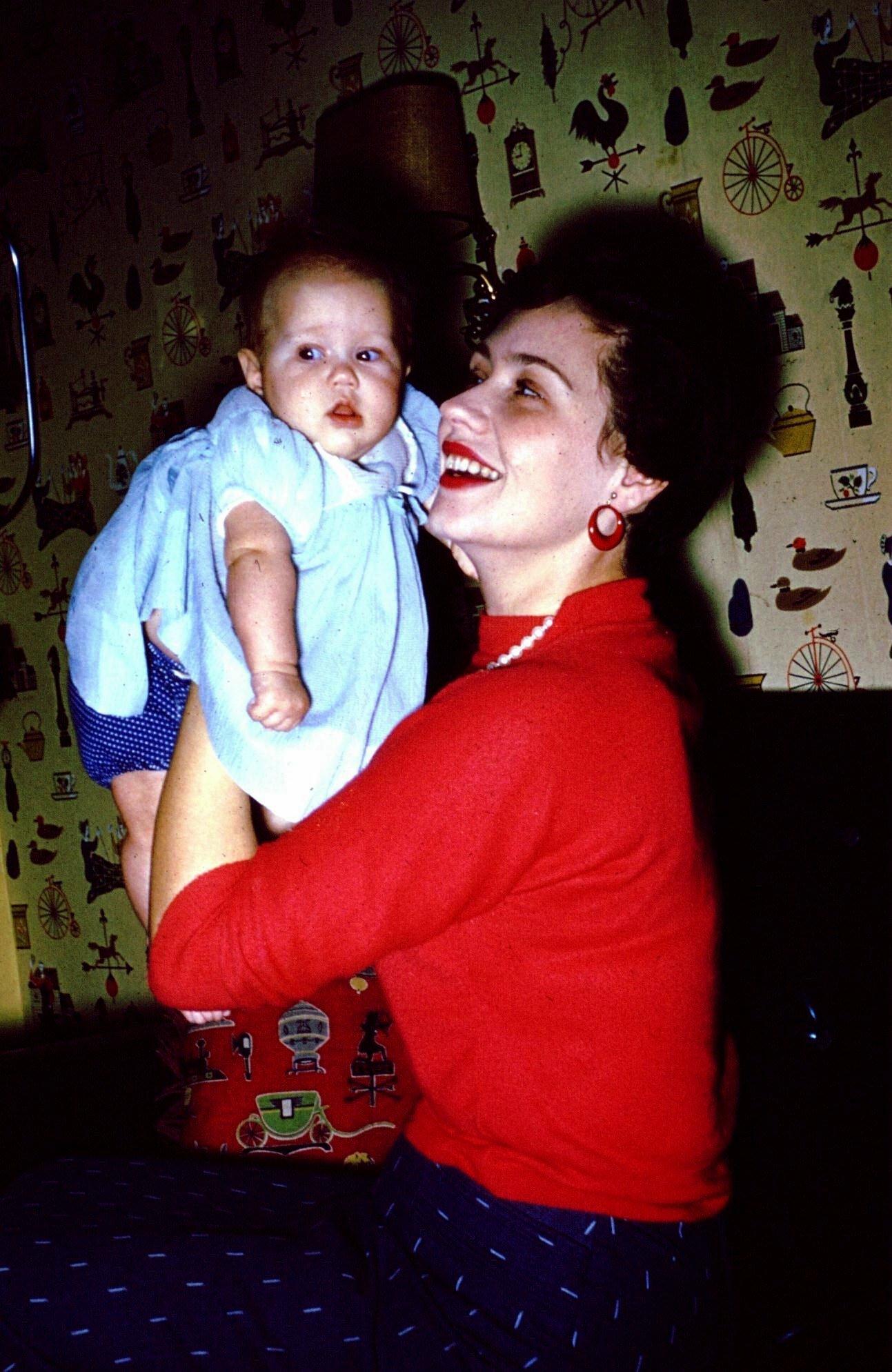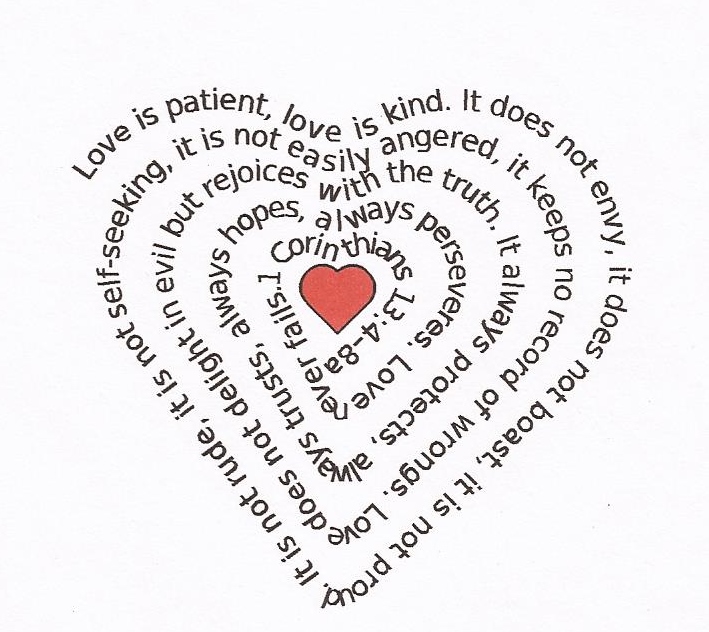 This is a story about a wonderful 13 year old girl who came to my office before the beginning of the new school year started. “Caitlyn” walked in, a young girl who had doubts about her abilities to succeed in school, sports and relationships with her peers. “Some days I can’t get out of my mother’s car and walk into class. I make C’s in school. I just don’t know why I need to go to school.” She was clearly in a negative funk.
This is a story about a wonderful 13 year old girl who came to my office before the beginning of the new school year started. “Caitlyn” walked in, a young girl who had doubts about her abilities to succeed in school, sports and relationships with her peers. “Some days I can’t get out of my mother’s car and walk into class. I make C’s in school. I just don’t know why I need to go to school.” She was clearly in a negative funk.
There was something special about Caitlyn that seemed to be hiding beneath the layers of doubt. She appeared to brighten as I spoke with her about what she wanted instead of what she didn’t want. “I love to draw”, she said and smiled. I noticed a spark in her eyes. I shared with her that she could be anything, accomplish anything she set her mind to.
When we were ready to do the hypnosis portion of the session, she wanted to focus on improving her grades, doing better as sports and enjoy her passion, drawing. Caitlyn was able to visualize herself with better study habits and the rewards that brings. Success builds upon success, so she naturally moved forward to improved performance her chosen sport, swimming and greater focus when drawing. She began to truly understand that KNOWLEDGE was her key and POWER to personal success. She was able to see herself succeeding, becoming who she wanted to be.
Her parents reported to me later in that school year that she was making A’s and B’s. She had won several swim meets. She found a high school that offered an excellent art program and they were pursuing her attending it the next year. She has already decided on her future college aspirations and is looking at what she will need to accomplish in high school in order to get in!
Caitlyn has returned for a booster shot of Positivity. With her dreams and goals, she wants to stay focused and enthused. Wow! We can all learn to seek our inner strengths and set those goals. Our subconscious will gladly assist us. Hypnosis is a safe, noninvasive and enjoyable tool to make the switch from stinking thinking to powerfully positive. Through hypnosis allows you to see your potential and create the life you desire.
Be Proud Caitlyn! The sky is the limit and you are ready to soar. This is why I work in hypnosis, outcomes just like this!
DebbieDona
I recorded this two years ago, the information is just as important today. Remember, got stress? Take a breath. Deep breathing is your how your body calms itself down! If you take the time to breathe, you make the time to de-stress.
You hate smoking. It stinks, it is costly and quite frankly you are tired of Big Tobacco putting their claws into your  wallet. So, what comes next? If you are like so many people I see, you have tried numerous ways in the past, just to end up picking them (cigarettes) back up again. I have heard tales of people spending days at a smoke cessation seminar, only to buy a pack on their way home again. Yet, I have so many clients who stop smoking in only one session!
wallet. So, what comes next? If you are like so many people I see, you have tried numerous ways in the past, just to end up picking them (cigarettes) back up again. I have heard tales of people spending days at a smoke cessation seminar, only to buy a pack on their way home again. Yet, I have so many clients who stop smoking in only one session!
We review when you started smoking, how much you smoke and what triggers your desire for a cigarette. I ask lots and lots of questions, really wanting to understand everything about your habit. I understand that no two smokers are the same, so how we work together is bound to be different. I also have some suggestions that are offered to all.
Here are seven tips that may help you stop smoking:
- Replace old tired habits with healthy new habits. Times when you used to smoke, brush your teeth, shower, exercise, change activities. Remember…. the intensity, frequency & length of cravings diminish daily. You can outlast a craving. A thought of a cigarette is not a true craving!
- Drink plenty of water, up to 6 – 8 glasses per day. Water helps to flush out toxins and the 7000 chemicals that cigarettes introduce into your body in slow, lethal doses.
- Do Not Skip Meals – Each puff of the stimulant nicotine was your spoon releasing stored fats and sugars into your bloodstream via your body’s fight or flight pathways. It allowed you to skip meals without experiencing wild blood-sugar swing symptoms, such as an inability to concentrate or hunger related anxieties. Why add needless symptoms to withdrawal? Instead, learn to spread your normal daily calorie intake out more evenly over the entire day. Try hard not to skip breakfast or lunch. It’s not about eating more food but less food more frequently.
- If you smoke when drinking, cut down on alcohol, to avoid weakening your promise to yourself.
- The Smoking Dream – Be prepared for an extremely vivid smoking dream as tobacco odors released by horizontal healing lungs are swept up bronchial tubes by rapidly healing cilia and come in contact with a vastly enhanced sense of smell. See it as the wonderful sign of healing it reflects and nothing more.
- Exercise! In addition to providing a distraction, “exercise may help reduce the craving because exercise helps reduce stress. It’s also useful for minor anxiety or depression — both of which can influence people to smoke. Along with cardiovascular exercise, include lifting weights. Lifting weights has shown some evidence of helping people quit smoking, although this data comes from smaller studies. It may help to keep free weights by your office desk, because they could also provide a distraction from a craving.
- Relapse – Remember that there are only two good reasons to take a puff once you quit. You decide that you want to go back to your old level of consumption until smoking cripples and then kills you, or you decide you really enjoy withdrawal and you want to make it last forever. As long as neither of these options appeals to you the solution is as simple as … no nicotine just one day at a time, to stick to your original commitment to … Never Take Another Puff!
What if you have some cravings? Well, it is important to remember that cravings are time limited; usually lasting three minutes, so reducing a craving is often a matter of finding something else to do for that short time. If you sit in a chair and wait for the craving to go away, that’s going to make it much harder instead, change activities such as take a short walk. Studies show that nicotine cessation causes significant time distortion. Although no subconsciously triggered crave episode will last longer than three minutes, to a quitter the minutes can feel like hours, especially if they panic. Keep a clock handy to maintain honest perspective.
So call me today with your questions and you can become a clean air breather! (727) 781-8483
I often speak with my clients about mindful eating. It is a topic with weight management clients as well as those seeking to practice mindfulness. The intent is to take the time to appreciate every aspect of a meal. Notice the appearance and the aromas before even taking the first bite. Spend a moment in quiet gratitude. When you begin eating chew, chew, chew! Notice the textures as well as the flavor of the food. Notice how the taste can change as you break it down with your teeth and the enzymes in your saliva. Breathe out before you swallow, so no air pockets form in your belly.
So, when a friend of mine shared this video with me, I knew I had to share this with you, dear readers. These are dogs, neither one is right or wrong. However, I do want to ask, which style do you resemble when eating?
A woman recently came to see me for her weight. She told me right up front that she is very active (plays an active sport daily) and eats healthy during the day. It is at night time that she has a problem. She believed that she just needed to be more disciplined after dinner and she would be fine. It was just that those snacks were her reward.
So, she wanted me to help her become stricter with herself. I asked her if she was to become stricter, what else would be different about her. She said she would be more at peace, love herself more and feel more accepted by others. This led me to asking her who doesn’t accept her. Tears flowed as she told me how she never felt loved by one of her parents.
We worked on that inner child who needed love.
After the session, she told me she had considered cancelling, that she thought she just needed to try harder. Now she was so grateful she had come, she realized her approach had been a repeat of the harsh way that parent had treated her.
Another client had been successful with me in the past. She changed jobs and schedules. The scale began to creep back up and she was concerned. She called me to say this job was causing her to gain weight and she needed a refresher. Although she liked her new job, she resented the change in schedule. She also had a new room mate who she felt could be intrusive. Topped off with the loss of a beloved pet, she had returned to food for comfort. Therefore, we worked on ways to feel the same comfort without the food. In trance she realized that writing letters to God would help her. So the letters began and she is now happily watching the scale go back down.
A gentleman I worked with had watched the scale creep up and up, until he was at a dangerous level. He had grown up in farm country, so he loved beef, vegetables and fresh bread. Changing those habits should be easy enough, except he was hiding some secrets. He grew up very poor. There wasn’t always enough food for him and his sister. As the older brother, he would give the food to her. Now that he could supply his own food, he felt the need to insure there was always enough. Furthermore he had been abused as a young boy. If he didn’t do what was asked of him, there was no food allowed. This extra weight, according to his subconscious mind would keep him safe from abusers. By reassuring that inner child, empowering his adult self and learning to feel safe, he began his journey to a healthy weight.
These are just a few examples of how we create unhealthy habits for good reasons. All three of these individual knew how to eat healthy, what they needed to learn was how to shed the negative emotions in order to shed weight.
There is an uptick at this time of year in the number of people who call me about weight loss. As summer approaches, people begin to wear less clothing and more revealing. Suddenly it seems that not having kept their new year’s resolution matters. Those individuals are often concerned about the appearance aspect of their weight. If that is the motivation, super! Because, once they get into a healthy new routine, the health and wellness benefits become the siren song of a clean diet and getting movement into every day.
For me, walking has long been a movement of choice. I love seeing the sites when I walk, clearing my head and getting my heart rate up. Now that I have the pups, walking is also a necessary part of my day, several times a day. A few years back I discovered the joys of yoga. The stretching, using my body as resistance and of course the philosophy behind yoga of self-acceptance all resonated with me. Therefore I have included it into my routines.
In the past I lifted weights, however, I had lost interest in it. When I came across Wendi Friesen’s s protocol for helping body builders, it did inspire some interest again. However, I didn’t seem to stick with it. Recently I became more aware of just what lifting does for an individual and so I find myself incorporating it into my routines as well.
As my mother (who will be 90 this year) is in a nursing facility, she is getting several types of rehabilitation. The physical therapy includes the use of light weights. This reminded me that you are never too old to lift!
The benefits of lifting for seniors include:
- improved bone mass
- lower fat on the body
- improved strength and flexibility
- reduced symptoms of chronic illnesses
- lower resting blood pressure
- increase serotonin (the feel good hormone) production
- mental sharpness increases
I found even more great benefits in this article:
Weightlifting: 20 Benefits for Mind and Body
Perhaps I should have listened to Wendi and started body-building when I learned how to help others with it. However, I am not able to go back in time to change that. What I can do and have done is start with now. From now on, weight training is a part of my life. It is not my intent to become a competitive body-builder, just to be responsible for the only body I have. To ensure I stick with it this time, you can be sure that I include self-hypnosis around weight training.
 If you are like many people I encounter, your intentions for making a change in your weight since the first of the year have fallen by the wayside. We start out with New Year’s Resolutions and great intentions. Then life gets messy (or busy) and we slip back into old habits. The days slipped by and now it is spring and you are still carrying that excess weight around. Before you know it, summer will be her
If you are like many people I encounter, your intentions for making a change in your weight since the first of the year have fallen by the wayside. We start out with New Year’s Resolutions and great intentions. Then life gets messy (or busy) and we slip back into old habits. The days slipped by and now it is spring and you are still carrying that excess weight around. Before you know it, summer will be her
e and that means wearing less layers of clothing, but what about the layers of excess fat?
Not only is fat uncomfortable to lug around, it is hard on your body. Everyone knows that excessive weight aggravates, and even causes, many unhealthy medical conditions. The list includes bone and joint disorders, cardiovascular disease, pulmonary problems, cancer, dementia and diabetes. Being fat is being inflamed.
Spring has sprung and it is a time of new beginnings. Babies in the animal kingdom are arriving every day. Flowers are blooming and we think of spring as a time of renewal. So, why not renew your commitment to your body? The days are longer and you want to have more energy to enjoy them, right?
The first thing you want to consider is spring cleaning your pantry. I recently had a client tell me that she would do well all day long and then at the end of the day, the cookies would call to her from her kitchen. She lives alone, so the cookies needed to go, along with the “emergency candies”, breakfast pastries and several other items that were keeping her from achieving her medically needed weight loss. It is time to fill your kitchen with colorful fresh foods.
Just like those lovely May flowers that need April showers, we need lots and lots of hydration. I encourage my clients to cut lemons or cucumbers or strawberries, whatever flavor they enjoy up and put it into a pitcher of water, infused water at the ready all day long. Drinking water and lots of it is important in any weight loss program. I can’t emphasize enough the value of drinking water when working on weight loss, in fact here is another article I wrote about the connection between water and weight.
Now that the sun is up early and longer, it is a great time to get out and move your body. I have two dogs who keep me moving. We walk often, we walk briskly and we cover distance. It is good for all of us. If walking isn’t your thing, find something that is. Weight lifting, yoga, bike riding, whatever you do, just move!
If you need help getting motivated, try hypnosis for weight loss. With the woman who had to clean out her kitchen, we did a session of visualizing the produce department at her favorite food store. She later reported that she found herself craving veggies and fruits. With clients who need to move more, we may find ourselves lost in their favorite sport or activity. Want to increase your water consumption? We may link water to a color or other visual that reminds you it is time to hydrate. The sessions are geared to your needs, the results are powerful.
If you want some quick easy tips on how to get started, I found this article to be interesting and I love their website!
How To Lose Weight Fast: 5 Evidence Based Steps Anyone Can Follow
In The Midst Of Chaos
The message was on my phone when I awoke on a Saturday morning about one and a half months ago. My mother was found on the floor in a fetal position, scared, undressed and confused. When she couldn’t be helped up, the ambulance was called and she was taken to a local hospital. Since then I have spent part of almost every day with her, first at the hospital and now at the rehab center. As anyone who has dealt with an aging parent knows, it can be a rollercoaster of highs, lows and in-betweens. Simultaneously, I have been spending some time with a friend who has her own health challenges.
My challenge, I found was to maintain balance. Or at this moment, finding balance. You know the balance I so often speak of? Now was a chance to put into practice what I teach. While I am not new to this, ‘crisis management’ is not my first choice of fun things to do. But, I want to live a happy and fun life.
Naturally the first thing to remember is to breathe. What happens in stressful situations? We get tense and experience shortness of breath. Driving to and from, I noticed I was holding my breath and choking the steering wheel. I reminded myself on the way to visit Mom, take deep breathes at every stop light. I found myself enjoying the commute, it was a chance to clear my head and prepare for whatever I was going to next encounter. Cars that raced ahead of mine I noticed often ended waiting at the same lights with me. Hmmm…..
Finding the humor in every day is vital. Mom was always a funny woman, bright and a great story teller. I had asked her a few years ago to answer in emails a series of questions about her childhood. This was to preserve those memories for my sons. They have come in handy now, as I could remind her of them and get her to laugh with me. We laughed over memories of pets, naughty things my younger brothers had pulled (as twins they were truly double trouble) and ways she had hoodwinked her own beleaguered mother. What she didn’t know was that some of the things she would say in her moments of confusion, I posted on my Facebook account to allow me to save the humor in even this situation.
Facebook Posts
- Mom: I need a hypnotist
Me: Mom, I am a hypnotist
Mom: A real, bona-fide hypnotist?
Me: Yes, the real deal, I have won awards for my work.
What do you need?
Mom: Oh never mind, I can’t remember.
- Mom told me her pain pill was confused, it thought it was a computer. I asked her if she could use her programming skills to create a pain free experience. She decided to develop that process.
I do my best to get proper sleep, exercise and eat healthy. It is easy when one is busy to forget those things; still it is very important to remember self-care. If I find myself slipping, I practice self-hypnosis. Taking the time for a session can turn the day around! Sometimes it is as typical a session as releasing the stress, other times it might be allowing my subconscious mind to direct me to how to resolve an issue that arises. Always it is a good opportunity to refresh and return to calm within, regardless of chaos that might be surrounding me.
I can’t rehearse for guilt
Another balance tool is sharing a little time with a friend. Some friends I reach out to by phone, others in person. Sometimes it is to vent or cry, but most times to “catch up” and laugh. Just today I had an opportunity to meet with a friend, unscheduled! I had an appointment on my calendar, but it was rescheduled at last minute. This left me with time that I could dutifully go see my mother, work on paperwork, clean or any of a dozen tasks. I thought about it for a moment and decided all those things were going to continue to call out to me, but I craved friendship and balance. I called a girlfriend who met up with me and we had a marvelous time.
As we were speaking, I said to her that I knew I could end up feeling guilty for the things I didn’t do for my mother when she eventually leaves us. However, I also know that the stages of grief will happen. Therefore, it dawned on me that I can’t rehearse for guilt. That wasn’t going to eliminate the guilt later, only mess up the NOW. Balance means living in the now.
Although it is hard to say no when Mom wants me, there are times I have to. Refusing the woman who I have loved my entire life is a challenge. It is then that I must recall that just as she had to say no to me at times as I grew up, I may have to do the same now. At times I allow the professionals to take over. She sent me to school and that meant that others watched over and guided me, just as the nurses and caregivers where she is are doing the same for her.
Finding Balance
The search for balance is hard but necessary. With a healthy balance, the guilt will not feel as prevalent. The answer is never obvious. It is important to keep my mind open to new ways to explore it, balance is never that far away. Balance is within.
I am concerned about the many people I have calling me recently about the stress, helplessness and anger they are feeling over the outcome of the election. This is from both sides! Families and friendships have broken up over it. Friends of mine (from both sides of the fence) have posted messages of anger and fear on social media. People speak of feeling betrayed by friends who voted differently.
Post Election Stress Disorder
I have read articles in professional journals recently that others are seeing the same thing. Today I was told about a diagnosis of Post-Election Stress Disorder (PESD). Like its counterpart PTSD, PESD results when a person is exposed to a traumatic event that overwhelms their normal coping skills. Common complaints are feelings of shock, dismay, depression, fear, panic and impending doom. Even this has caused a division, as a veteran who has experienced the horrors of combat or a victim of violent domestic abuse feels it is disingenuous to compare the differing scenarios. What I know is, to the people I speak with their experience is real and they are suffering.
From Survivor to Thriver!
One of the traditional models of treating PTSD, developed by George Everly, PhD, uses a SAFER model to guide one through a crisis. This can be used for PESD as well. The basic steps are:
- Stabilize
- Acknowledge the crisis
- Facilitate understanding
- Encourage effective coping
- Recovery or Referral
Stabilize the situation by turning off the flow of stress, which includes the all-day news channels, social media sites, blogs, tweets and radio rants. Unfollow political posters for a while. Limit your reading the latest news to a minimum. For work, develop a list of distracting responses to the question “So, what did you think about the election?”
Acknowledge that this has been a unique experience in our nation’s electoral process. It isn’t the first time our nation has been at odds, so remember the adage, “May you live in interesting times”. President Kennedy once referenced this in a speech he gave. We survived a Civil War and Nixon’s Watergate.
Facilitate understanding of what took place. It’s normal to have a shock reaction to unexpected events. The fears and anxieties that are arising are simply the mind’s attempts to find meaning and take comfort in understanding. Don’t worry about your worries.
Encourage effective coping. Maybe this is not the time to take to Twitter or Facebook and rant about everything that is wrong with the world. Focus on being the light in a time of darkness. Breathe deep and commit random acts of kindness. Take a step back and get the wider view.
Recover a sense of normalcy in your life. If you haven’t in the past spent large amounts of time neck-deep in politics, be cautious about submerging yourself into it now. Swim out of the deep end of political rhetoric and take a walk, listen to music, follow your usual routines. Get back to focusing on chores and the kid’s extracurricular activities. Rest and restore your energy; you’ve earned it. Listen to a stress relieving hypnosis audio. If, upon awakening, you find your resiliency muscle is in need of a workout, consider referring yourself to a helping professional.
The process of recovery and grieving is not an overnight miracle. However, through hypnosis, changes occur more rapidly than without. It is important to build up your ability to bounce back and to make the shift from survivor to thriver!
The good news is our forefathers had the wisdom to ensure we only go through this process once every four years.
 Do you sigh when you hear the Elvis song, “Are you lonesome tonight”? Remember the guy in Love Potion #9 who was a flop with the chicks? Well, he almost got it right. But, instead of going to Madame Rue for something to drink, he should have come to Debbie Lane’s Wisdom Hypnosis for something to THINK!
Do you sigh when you hear the Elvis song, “Are you lonesome tonight”? Remember the guy in Love Potion #9 who was a flop with the chicks? Well, he almost got it right. But, instead of going to Madame Rue for something to drink, he should have come to Debbie Lane’s Wisdom Hypnosis for something to THINK!
The Real Love Potion # 9
Wednesday – February 22, 2017
6:00 – 9:00 p.m.
UP Hypnosis Institute
1810 S Pinellas Ave, Suite G, Tarpon Springs, FL 34689
(727) 943 – 5003
Through hypnosis, total relaxation, and deep writing, you will:
* measure and build self esteem
* determine where you*re stuck
* learn how to get unstuck
* release the mistakes of the past
* thoroughly describe Mr. or Ms. Right
Your Investment in true love? Only $35.00

